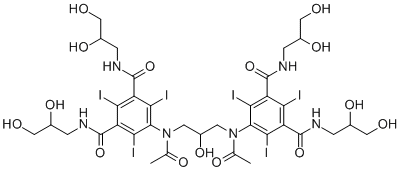BRONJ is an alteration in bone turnover associated with the particular characteristics of the jaw bone, such as mucosal coating, frequent risk of infection, and constant potential for trauma. Some authors have described the appearance of BRONJ along with Actinomyces infections and have reported several cases involving bone necrosis and osteomyelitis that were caused by this microorganism. However, there have been few reports on bacterial infection and innate immunity in association with BRONJ. In our study, the influence of ZOL, a NBP, on TLR4 signaling in RAW264.7 cells was examined. LPS binding to TLR4 induces inflammatory cytokines and nitric oxide by activating NF-kB because intracellular signal transduction through various TLR4 downstream adaptor molecules occurs, resulting in the production  of nitric oxide synthase. We showed that LPS-stimulated induction of inflammatory cytokines IL-1b, IL-6, and TNF-a and NO production in RAW264.7 cells were enhanced after pretreatment with ZOL. Although inflammatory cytokines in blood, such as TNF-a and IL6, are reportedly increased in patients treated with NBPs, we did not find any significant increase in these inflammatory cytokines in RAW264.7 cells after stimulation with ZOL alone. Inflammation involves multiple cascades mediated by activated inflammatory or immune cells. In these cascades, a number of immunopathological changes occur, including the overproduction of NO, proinflammatory cytokines such as IL-1b, IL-6, and TNFa, and other detrimental mediators, including caspases, that in turn activate apoptosis. TNF-a overproduction stimulates the generation of other prooxidant mediators that directly induce cell injury. Among these, free radicals such as NO seem to play a central role. The inflammatory cytokines IL-1b and TNF-a are involved in the induction of cell apoptosis. IL-1b is produced as an inactive precursor that assumes the active form through excision of a precursor domain by an IL-1b-converting enzyme. This enzyme, caspase 1, is the first caspase discovered and it is among a group of cysteine proteases that govern the apoptotic process. TNF-a acts as an apoptosis-inducing factor by activating caspase 8 through adaptor molecules such as the TNF receptor type 1-associated death domain molecule and the Fas-associated death domain molecule. It is known that NBPs induce cellular apoptosis by inhibiting the mevalonic acid pathway. In the present study, apoptosis was increased by the administration of ZOL. Furthermore, apoptosis in the ZOL-treated cells was highly accelerated by stimulation with LPS. The inhibition of mevalonic acid pathway by ZOL and the hypersecretion of inflammatory cytokines in the ZOL-treated cells upon stimulation with LPS were considered as the reason that apoptosis increased. In TLR signal transduction, IkB-a is bound to NF-kB, which is directly involved in the production of inflammatory cytokines; thus, it acts as a suppressive factor.
of nitric oxide synthase. We showed that LPS-stimulated induction of inflammatory cytokines IL-1b, IL-6, and TNF-a and NO production in RAW264.7 cells were enhanced after pretreatment with ZOL. Although inflammatory cytokines in blood, such as TNF-a and IL6, are reportedly increased in patients treated with NBPs, we did not find any significant increase in these inflammatory cytokines in RAW264.7 cells after stimulation with ZOL alone. Inflammation involves multiple cascades mediated by activated inflammatory or immune cells. In these cascades, a number of immunopathological changes occur, including the overproduction of NO, proinflammatory cytokines such as IL-1b, IL-6, and TNFa, and other detrimental mediators, including caspases, that in turn activate apoptosis. TNF-a overproduction stimulates the generation of other prooxidant mediators that directly induce cell injury. Among these, free radicals such as NO seem to play a central role. The inflammatory cytokines IL-1b and TNF-a are involved in the induction of cell apoptosis. IL-1b is produced as an inactive precursor that assumes the active form through excision of a precursor domain by an IL-1b-converting enzyme. This enzyme, caspase 1, is the first caspase discovered and it is among a group of cysteine proteases that govern the apoptotic process. TNF-a acts as an apoptosis-inducing factor by activating caspase 8 through adaptor molecules such as the TNF receptor type 1-associated death domain molecule and the Fas-associated death domain molecule. It is known that NBPs induce cellular apoptosis by inhibiting the mevalonic acid pathway. In the present study, apoptosis was increased by the administration of ZOL. Furthermore, apoptosis in the ZOL-treated cells was highly accelerated by stimulation with LPS. The inhibition of mevalonic acid pathway by ZOL and the hypersecretion of inflammatory cytokines in the ZOL-treated cells upon stimulation with LPS were considered as the reason that apoptosis increased. In TLR signal transduction, IkB-a is bound to NF-kB, which is directly involved in the production of inflammatory cytokines; thus, it acts as a suppressive factor.